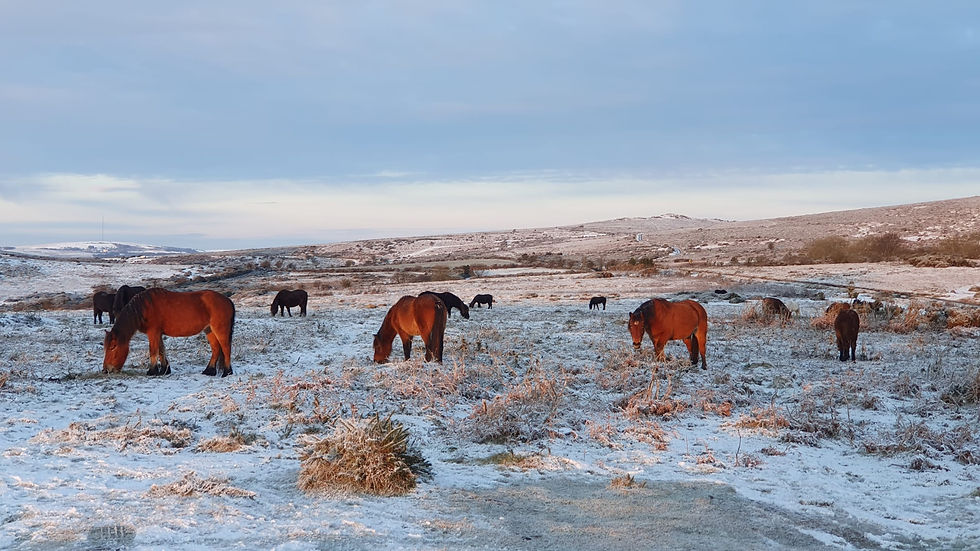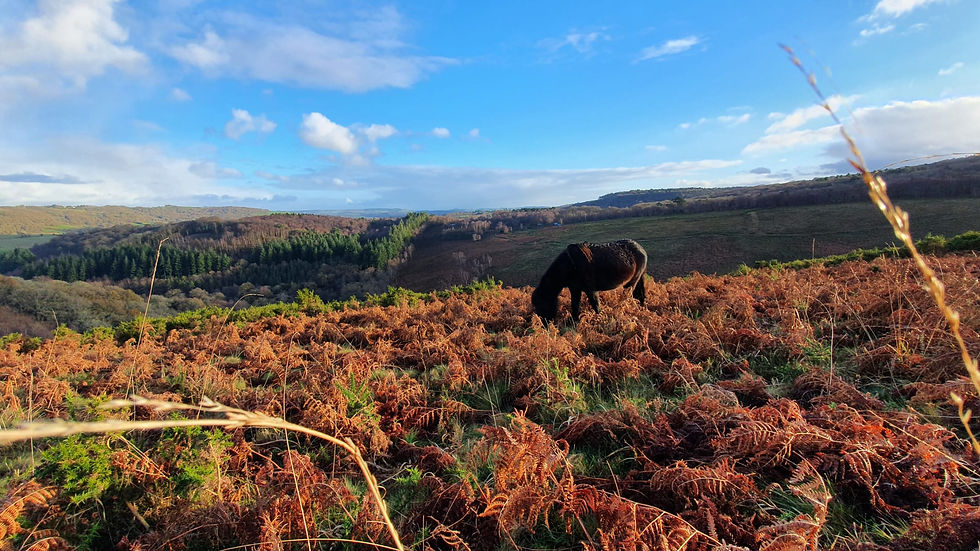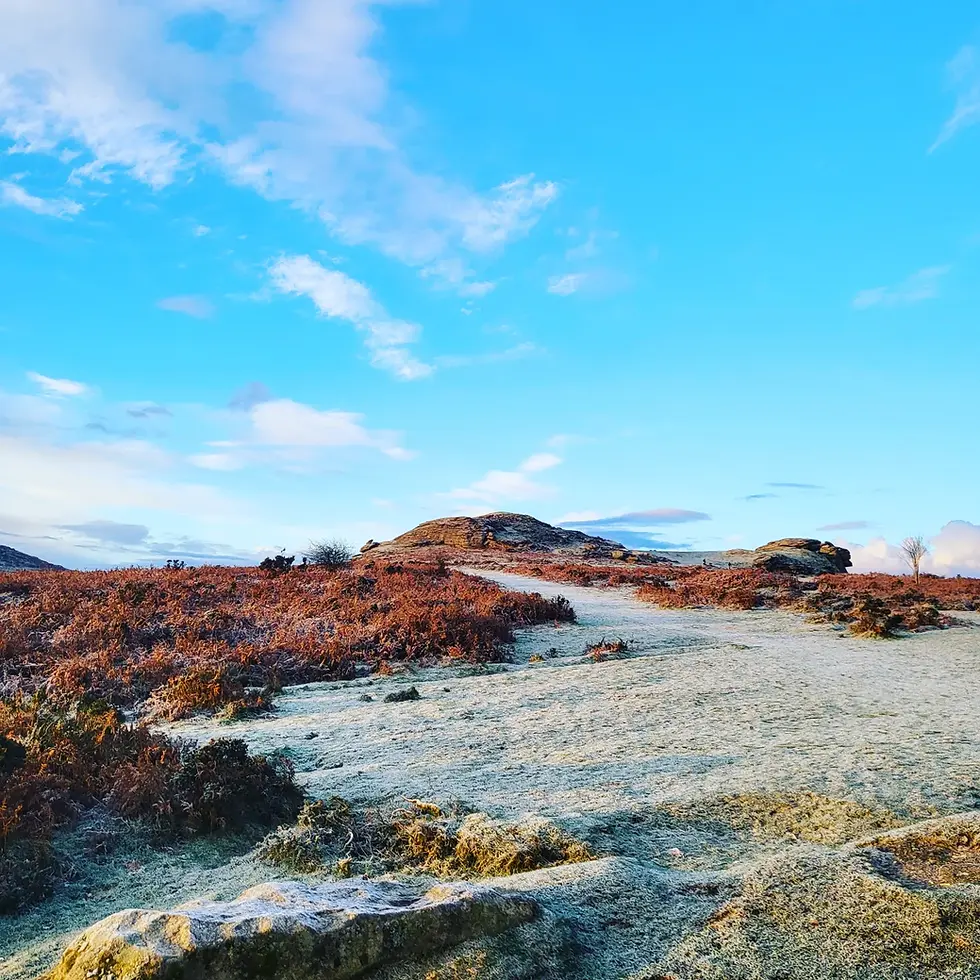Trees, Plants & Fungi on Dartmoor
- Jack Dicker
- Aug 19
- 3 min read

Dartmoor’s plant life is as remarkable as its wildlife, shaping much of what makes the landscape so distinctive. From windswept tors to sheltered valleys, every corner of the moor tells a story of survival and adaptation. Ancient oak woodlands, such as Wistman’s Wood, are among the oldest on Dartmoor, their twisted, moss-draped branches echoing a time when much of Britain was covered in thick forests. These woods are rare and fragile, protected as Sites of Special Scientific Interest, and they remind us how precious and irreplaceable these habitats are. Walking here requires care, as the ground flora has taken centuries to form, and even one careless step can damage it. Beyond the woods, gorse and heather bring bursts of colour, their tough leaves and spines showing just how well Dartmoor’s plants have adapted to the harsh weather.
Explore trees, plants & fungi on Dartmoor longside the familiar, there are hundreds of other plants that shape the moor. Blanket bogs hold sphagnum mosses that store water like sponges, keeping Dartmoor’s rivers flowing even in dry spells. Meadows and moorland edges burst into life with wildflowers such as tormentil and foxglove, attracting pollinators and brightening summer walks. The balance between plants and landscape is what makes Dartmoor so distinctive, and every habitat, from grassland to marsh, plays a role in supporting wildlife and holding the ecosystem together.
Fungi add another layer of intrigue, particularly in autumn when the damp climate brings them into full display. From the unmistakable red and white fly agaric to delicate waxcaps hiding in meadows, fungi help recycle nutrients, breaking down fallen wood and feeding the soil beneath our feet. Bracket fungi cling to tree trunks, while puffballs and toadstools create a scattering of surprises along woodland paths. For families exploring Dartmoor, searching for mushrooms, noticing tree shapes, or learning to recognise different leaves can transform a walk into a living classroom. Our tree and leaf guide is a great starting point for those keen to identify what they see along the way.
The changing seasons bring their own character to Dartmoor’s plant life. Spring carpets the valleys with bluebells and fresh green shoots, while summer meadows hum with bees feeding on clover and thistles. Autumn turns the moor into a patchwork of reds, yellows, and browns, with berries ripe for birds and fungi thriving in the damp air. Winter strips the land back, leaving hardy lichens and evergreen trees to stand against the weather, a reminder of resilience. For families, each season offers a new lens through which to explore the moor and connect with its natural rhythms.
By walking lightly and leaving no trace, we give Dartmoor’s ancient trees, vibrant plants, and delicate fungi the chance to thrive for generations. This living landscape is both fragile and enduring, and with care it will continue to inspire awe and wonder in those who come to walk its paths.
Looking to keep reading? Explore Who Looks After Dartmoor to see the organisations, farmers, and businesses who care for this landscape. If you’re fascinated by animals, head to Wildlife Wonders. For practical advice, check out Family Friendly Tips on Dartmoor. To understand where you can and cannot go, visit Rights and Access on Dartmoor. For ways to leave a positive impact, read How You Can Help, and for a wider reflection on the year-round beauty, see Seasons on Dartmoor. Finally, remember the guidance in Respecting Dartmoor to keep the moor safe and thriving.



Comments